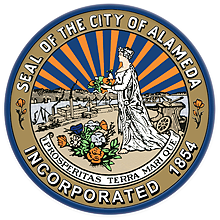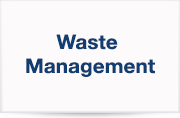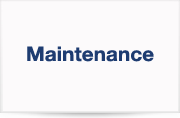The San Francisco Bay Area’s storm season runs from November through March every year. The amount of severity of flooding depends the storm itself; conditions of the local property, street, and stormwater system; and how high the tide is.
What is the Public Works Department doing to prepare for storm season?
Throughout the year, Public Works:
follows a preventative maintenance schedule for Alameda’s 4,391 storm drain inlets and catch basins, and 10 storm drain pump stations to help the stormwater system operate effectively during the storm season
- implements a conditions-based paving program that improves Alameda's streets and our flowlines, and reduces the probability of potholes
- replaces roofs, checks emergency generators on a quarterly basis, and otherwise maintains City's buildings so they are resilient during storms
- inspects and trims the City's street trees to help reduce the risk of failure during storms
In the two months before the storm season begins, Public Works:
clears storm drain outfalls around Alameda, e.g., Park Street and Shoreline
clears storm drains where flooding has occurred in the past
rechecks storm drain pump station equipment (including backup generators) and clears their trash racks
rechecks traffic signals’ back-up batteries
issues a press release notifying residents of the process to get sandbags and suggests preparations Alamedans should take
In the 2 days before a severe storm, Public Works:
issues a press release a) suggesting residents call 510-747-7900 (unless it’s after 6:00 p.m., then 510-337-8340) for tree and branch failures, traffic signals down, and flooding, and b) explains how Alamedans can get up to five free sandbags.
street sweepers alter their typical schedule to pick up as much leaves and debris as possible in high-priority locations to help prevent flooding
Alameda Police are notified of locations to suspend enforcement of street sweeping-related parking restrictions
offers up to 5 free sandbags to Alamedan residents who can show their proof of residency (residents fill sand bags themselves). Supplies are limited.
During the storm season, Public Works:
rechecks backup generators, loader, chainsaws, chippers, and other equipment to ensure it is fueled and ready
coordinates with the City’s tree maintenance contractor to ensure its crews are available during and after hours for fallen trees and limbs
lowers lagoons to accept more stormwater
keeps on-hand enough sandbags, flooding signs, barricades, and temporary stop-signs to deploy during storms
street sweepers vacuum up water at known flooding locations
What can Alamedans do to prepare?
Call Public Works ASAP at 510-747-7900:
if there is a pile of leaves and/or other debris in the parking lane;
if a culvert, inlet, or storm drain appears clogged up with leaves and/or debris;
if a street tree appears weakened, diseased, or dying;
if you observe malfunctioning traffic signals, downed trees or branches, and/or flooding into a traffic lane
Other things you can to:
Hire an arborist to inspect trees on private property that appear weakened, diseased, dying, or otherwise susceptible to damage in a storm.
Make roof repairs and/or fix leaks before the rain begins.
Clear gutters of leaves and other debris.
Avoid putting leaves and yardwaste in the street, as this clogs the storm drains.
Consider purchasing flood insurance, if you are a property owner, and/or contents insurance, if you are a renter. These policies often require a 30-day waiting period between purchase and first claimed event.
Have an emergency plan in place for your family, and a dry place for storm supplies. See more at http://www.bepreparedcalifornia.ca.gov/Pages/Home.aspx.
Find out if your homeowners association (HOA) is responsible for maintaining your neighborhood’s culverts, inlets, drains, and/or outfalls; if so, make sure the HOA is preparing the system for the storm season.
Park your vehicles and place your waste containers one foot away from the curb so that stormwater can flow unobstructed.
During the storm, please be patient as Public Works is typically triaging many requests for service from the public, Alameda Police, and others.






